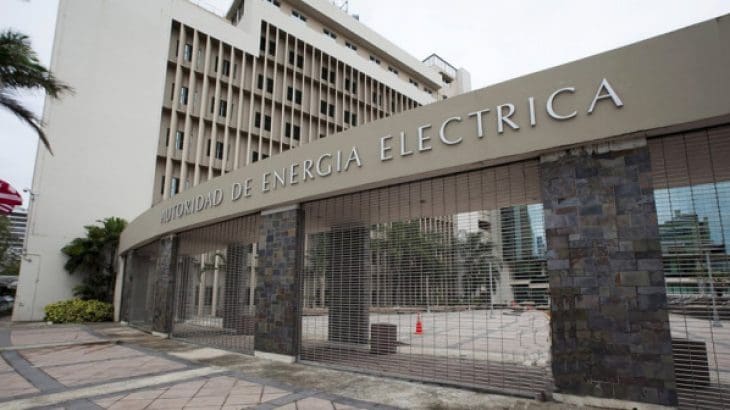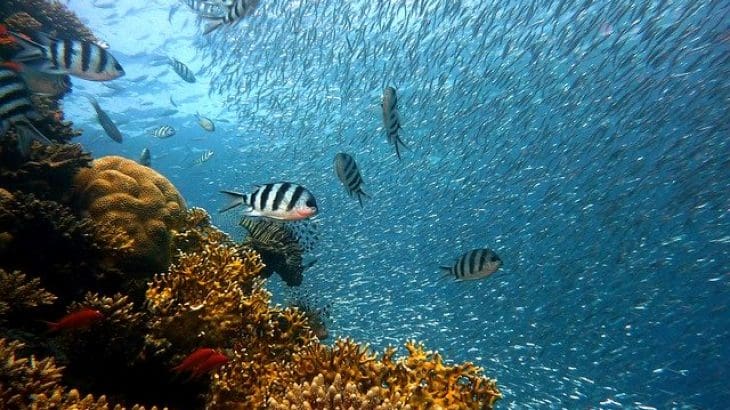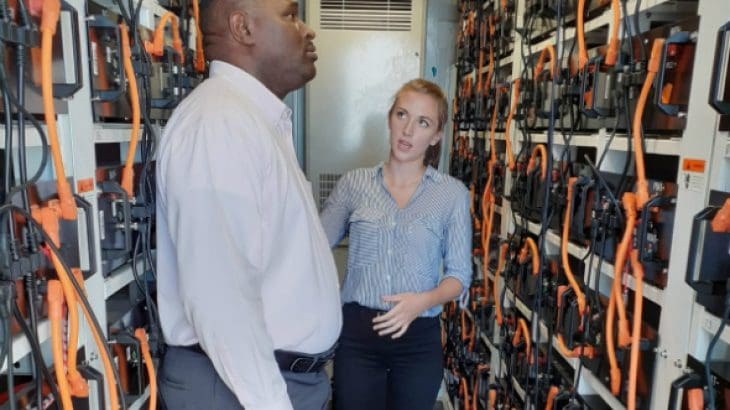A new decade, a new era for the Caribbean energy market? Correlating the arrival of 2020 with a watershed in the way in which the region operates is, arguably, a fool’s game. What’s undeniable, however, is that if evolution is sometimes slow, sometimes rapid, we are currently in a period characterized by the latter. Change is in the air.
We asked a group of experts – on-the-ground practitioners who have been active in the Caribbean for years – to give us their thoughts on what’s driving the market, and trends to look out for in 2020.
1. Mainstreaming of solar and storage
The region continues to embrace solar and energy storage. Arguably, the growth has been most impactful – to date – for smaller islands, where a combined system can have a significant impact on grid resilience and flexibility. BMR Energy CEO Bruce Levy agrees, stating, “We see a significant increase in activity on smaller islands seeking combined solar and storage solutions to best integrate renewable energy.”
Distributed solar has a significant role to play for many islands, particularly those islands facing land-use challenges. Angella Rainford, CEO & Founder of Soleco Energy, believes that “Utility-scale projects will continue to develop but I would anticipate an acceleration in the DG market relative to utility-scale.”
Utilities are also moving on solar and storage, and remain keen to integrate the technology across island grids. “Battery storage is being explored as a utility resource in many Caribbean countries,” said Christopher Burgess, Director of Projects – Island Energy Programs, Rocky Mountain Institute. “Batteries are unlocking value for utilities and customers by reducing fuel and operations and maintenance of generators.”
As opportunities grow, non-traditional clean energy developers are stepping up, as observed by Robert Blenker, CEO of WRB Enterprises. “We should expect to see more proactive participation from the traditional thermal generators such as Wartsila as they actively promote storage, integrated solar and microgrids, backed by their significant financial and technical expertise.”
Further, a few islands have recognized the need for a firm and resilient resource at critical facilities. Burgess observes, “We are seeing critical facility microgrids as central to the Caribbean’s first steps toward a renewable, resilient and distributed power system, where the customer, government, and the utility all benefit.”
2. Boom time for solar C&I?
Large scale power users continue to be a big growth market for renewable developers, and experts don’t see this trend going away. “The next iteration of the solar revolution is increasingly at the industrial and commercial level,” asserts Rainford. She continues, “2020 will likely see continued development in a range of business models which are deployed to take advantage of this trend across the Caribbean.”
Dr. Malaika Masson, Senior Regional Energy Specialist at the Inter-American Development Bank (IDB) agrees, noting that C&I customers may find easier paths to unlocking finance. “We are seeing interest from solar EPCs targeting commercial and industrial electricity customers, offering financing solutions to make self-generation more compelling,” she observed.
3. Year of the IRP?
For islands pursuing a clean energy future, an Integrated Resource Plan (IRP) offers a roadmap for stakeholders needing to align around a long-range vision for an island grid. The big IRP of 2019 laid out Bermuda’s bold vision to build a grid comprising 85% renewables by 2035. The market continues to await IRPs from several jurisdictions, Jamaica and Puerto Rico among them. “Several of the larger islands are nearing completion of multiyear planning processes and expect to move ahead with renewable energy procurement sometime in 2020,” said Bruce Levy.
4. EV policies paving the way for transportation transition
In the e-mobility race, the Caribbean has a few clear leaders – most notably Barbados – who have succeeded in aligning key private and public stakeholders to create a buzzing EV sector.
The IDB’s Dr. Masson emphasizes that the growth of electric mobility has huge implications for island energy sectors and the competitiveness of island economies. “As we have seen in Latin America, I’m sure we will witness more governments in the Caribbean draft policies and regulations that align the transport sector with their renewable energy and fuel diversification agenda,” said Dr. Masson. She continues that these steps are “based on the fact that electric mobility has a critical role to play in achieving decarbonization, energy independence, and resilience.”
5. The evolving Caribbean utility
As the saying goes: adapt or die. Regional utilities are adapting, and are in the midst of transformation.
“Just as jurisdictions in the region are embracing a cleaner, sustainable energy future, so electric utilities will be placing a greater emphasis on re-inventing themselves,” said BVIEC’s Abraham. They’ll get there, he believes, “by focusing on leveraging assets to be more energy solutions-centric, as opposed to the present particular attention on solely providing energy.”
Rainford agrees, with distributed generation being a key driver for the transition. “The strategies which grid operators and centralized utilities use to embrace or control distributed power market development will lead to an evolution in their own models,” she said.
Utilities aren’t the only ones involved in their transition, points out Dr. Masson. “The business case for the Energy Service Company (ESCO) model is getting stronger in the Caribbean, with impact investors, governments and development partners coming together to strengthen models that reduce costs and curtail carbon emissions by improving efficiency and leveraging renewable technologies.”
6. New financing options will bring more projects online
Blended finance continues to grab the headlines. But is this just a fad, or a real market driver? Adam Carter, head of investment banking at CIBC FirstCaribbean thinks it’s a driver, with a caveat. “In theory, blended finance helps, and for bigger projects, it can help further. It also can bring economic benefits to a project and improve financing costs. However, I would say there is a lot of capital looking for projects and so it needs to be competitive.”
Justin Ram, Director of Economics with the Caribbean Development Bank agrees that blended finance is an important financial tool for the region. “There are many investment opportunities in the region,” he said. “However, these opportunities are initially not at the scale, are novel for the region, or simply not mature enough to attract sufficient private capital at scale or at a viable cost. Blended finance options can become the financing vehicle to provide the required quantum of financial resources for these types of initiatives.” There are a range of options for using blended finance. Ram continues that options might include “blends of finance from concessional funds or multilateral banks and private capital or blends of government investment or government guarantees and private capital.”
Leroy Abraham, General Manager, British Virgin Islands Electricity Corporation remarked that the shift in the utility portfolio will be possible, in part, through new financing options. “My personal outlook is that the transformation of traditional utilities will be accomplished through a diversified portfolio of financing options never before available to the region.”
Blenker agrees that new sources of capital are key to development, particularly when local. “Players such as Williams and Massey suggest that regional developers seem to be picking up steam, developing indigenous expertise and mobilizing local capital for sustainability and renewables projects,” he said.
With any discussion of financing comes an assessment of risk. Unsurprisingly, severe weather events have driven up insurance costs for projects. Is this impacting overall project bankability? Carter suggests that project costs are stable. “While we’re seeing increased insurance costs, we’re not seeing other soft costs rise,” he says. “In fact, we’re seeing financing costs come in, given market liquidity and a low-interest rate globally. This could be offsetting any rise in insurance costs.”
7. Islands taking action on global climate commitments
With their livelihoods on the line, islands stand to lose the most in the climate change fight. Many islands have been out in front, making commitments to sustainability and renewable energy, but has the time come to show their hand? “Reality is catching up and it’s crunch time for these commitments to be met and for the region to retain a moral high ground on climate change,” said James Ellsmoor, Co-Founder and Director of Solar Head of State. “The Prime Ministers of Jamaica and Barbados have been particularly vocal to call for climate action and represent the region on the international stage.”
The moral high ground is important; arguably more important are the implications for the region of action in the global community. Ellsmoor cites the UK as an example. At COP26 this year in Glasgow, the hosting UK has an opportunity to “get the negotiations back on track and improve access to climate finance for SIDS.”
8. Regulation key to unlocking value
As islands continue to introduce renewable energy-friendly regulation, clean energy markets will grow. Once regarded as a laggard, the regulatory community is increasingly in lockstep with advances in technology. “There are promising signs on the regulatory front,” asserts Blenker. Citing the Jamaica Public Service (JPS) energy storage project as an example, he goes on to say that, “Regulators are demonstrating a more nuanced understanding with respect to ancillary services for grid management.”
9. It won’t all be plain sailing
It’s an election year! According to Ellsmoor, “In 2020 voters will head to the polls in Belize, the Dominican Republic, Guyana, Haiti, St. Kitts & Nevis, St. Vincent & the Grenadines, Suriname and Trinidad & Tobago. Energy will play an important role in some of these elections.” He notes that Guyana and Suriname particularly will face decisions around the management of new wealth, which IMF predicts could nearly double in 2020 alone. Whether that will translate into increased investment in clean energy remains to be seen.
In Trinidad, Ellsmoor continues, “the continued recession due to the decline of the petroleum industry is also contributing to a growing awareness of the opportunities in renewable energy for the twin-island state. This could see the opening up of a growing market for the development of renewables.”
And then there are the perennial issues. Robert Blenker suggests that “as always, development continues to be challenged by small project size, geography and the limited availability of land. There is no magic wand to clear these obstacles.”
What are your thoughts? Join the conversation on our CREF LinkedIn Group here.


